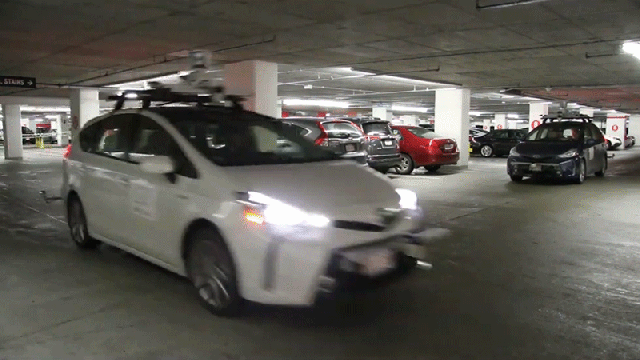Researchers at MIT are helping autonomous cars deliver on the promise of safer roads with a new trick that lets driverless vehicles see around corners to pre-emptively spot other vehicles or moving hazards that human drivers would never see coming.
[referenced url=” thumb=” title=” excerpt=”]
There have been several attempts to make cameras that are able to see around corners, including other MIT researchers who revealed a system that can shine light into a room from the outside, capture the light that’s bounced back, and then process the results to calculate a 3D model of objects inside that are otherwise hidden from human observers. It required a special camera, however, including lasers and other hardware that would inevitably increase the cost of an autonomous vehicle, which would, in turn, hurt sales. You didn’t think all these carmakers are developing driverless cars for fun, did you?
The new approach to spotting oncoming hazards around corners is being presented at the International Conference on Intelligent Robots and Systems in Macau, China, next week, and it builds and improves on an earlier system called ShadowCam that was developed a few years prior. Instead of using laser scanners or x-ray technology, the system uses video cameras focused on a very specific area, which in this case is the ground where two perpendicular roads or paths meet.
According to MIT, the camera captures a series of video frames that, even when recorded while the vehicle is in motion, can be intelligently processed and analysed to not only detect the presence of shadows and changing lighting conditions from frame to frame, it can also use that information to predict the position and speed of an approaching object hidden around a corner. This gives the autonomous car enough time to slow down or come to a complete stop if needed. And during testing, the camera-based system was found to beat more common laser-based LiDAR hardware by more than half a second.
However, it’s not ready for the highways and byways of the country just yet. To date, the researchers have only tested it in parking garages with the vehicle’s headlights turned off to help recreated nighttime driving conditions, and in hallways with self-driving electric wheelchairs. The system will need considerable more training before being able to take into account the ever-changing lighting conditions of the real world, as well as daytime driving when headlights aren’t turned on and the blinding light from the sun can wash out shadows and alter where they actually fall on the road’s surface.
